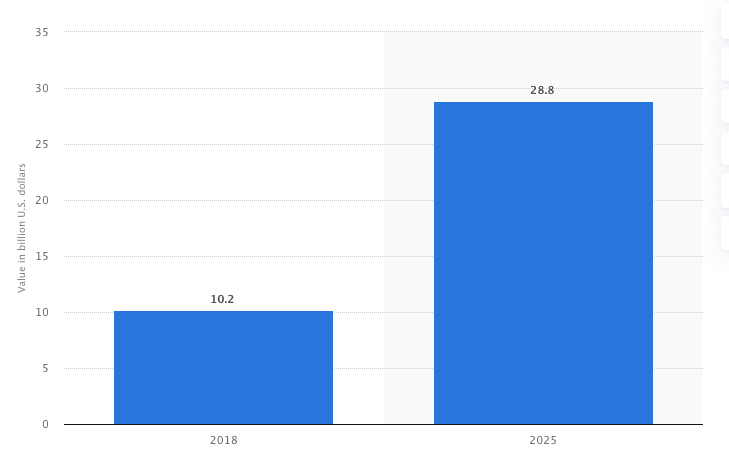Project financing through crowdfunding is very popular right now. More and more start-ups and companies are entering the global crowdfunding market, an alternative method of raising capital through individual investors.
Statistics
According to statistics, the global crowdfunding market will continue its rapid growth this year, growing by 23.3 per cent compared to last year. According to this, transactions will reach a value of more than 10 billion US dollars in 2020.
Since 2018, the value of transactions in the entire global crowdfunding industry has increased by 60 per cent. Statistics show that this strong upward trend will continue over the next three years, with the market growing by 12 per cent year-on-year and reaching a transaction value of almost $12 billion by 2021 and 28.8 billion by 2025.

All about sustainability
It is noticeable that crowdfunding has become established in many areas, especially in the sustainable industries, and has become a matter of course for many creative people and founders.
Almost all projects on crowdfunding platforms are now thinking about how they can make the value chain of their product sustainable and how they can create added value for society.
Not everything happens overnight, but many founders reflect today more than a few years ago that change is needed and the community also prefers to finance projects that think about sustainability.
Today we would like to share with you 3 current trendy crowdfunding platforms that are focusing on sustainable ideas. All platforms indicate the potential of crowdfunding to stimulate development and innovation, both environmentally and socially. Get inspired!
1. EcoCrowd

The German collective financing platform EcoCrowd is particularly interesting because it illustrates how public funds can be used to create platforms that address environmental issues by supporting their development. A place on the net where sustainable ideas can be supported, discussed and realised.
Projects that collect funding on EcoCrowd are assessed by the German Environmental Foundation on the basis of specially developed criteria and are given personal advice. The projects presented can not only be financed but also developed further – in this way, new ideas are continuously generated and sustainability becomes a tangible concept.
2. GreenCrowd

Greencrowd is a Dutch crowdfunding platform that has been investing in and financing renewable energy projects since its establishment in mid-2012. It is the marketplace for the financing of renewable energy projects. Crowdfunders find here well-structured projects with a clear risk classification.
Project developers find access to investors and financiers of renewable energy projects and different forms of services to get their projects well structured.
Greencrowd Foundation has an exemption from the Netherlands Authority For The Financial Markets (AFM) to mediate in attracting funds, therefore, money applicants will never be private individuals.
3. Kiva

Kiva is a nonprofit crowdfunding platform created by passionate people in 2005 in San Francisco. Though they have offices in Bangkok, Nairobi, Portland and staff working around the globe.
Its mission is to expand financial access to help underserved communities grow.
They do so by crowdfunding loans and freeing up capital for underserved populations, improving the quality and cost of financial services and removing fundamental barriers to access to finance worldwide.
Through the work of Kiva, students can pay tuition fees, women can start businesses, farmers can invest in equipment and families can pay for needed emergency assistance.
With a loan of just $25 for Kiva, you can be part of the solution and make a real difference. Every dollar you lend to Kiva goes to 100% to finance the loans.
The future of these platforms naturally depends largely on many factors, such as the quality of the campaigns. Previous successful campaigns show that people are willing to get involved and raise significant amounts of money. However, this suggests that people see the value of the campaigns. If too many campaigns fail or if they simply are not enough to inspire further action, the platforms will slowly decline.
Thus, possible collaborations between organizations working on sustainable development could be a great opportunity to find these inspiring campaigns.
The added value of such platforms is that, if successful, they become self-sufficient resource centres for new ideas and sustainable enterprises.
